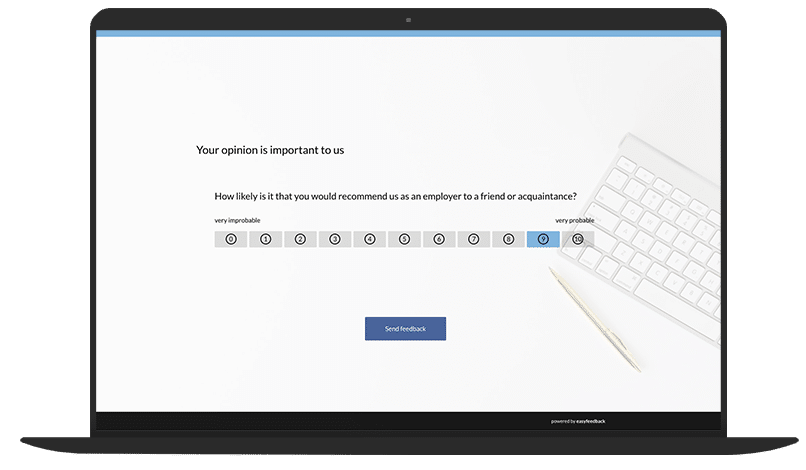Why should employee loyalty be measured?
Measuring employee loyalty helps companies to understand the loyalty of their employees and take targeted measures to improve it.

The advantages are:
- Recognize fluctuation risks: Early warning signs can be identified and counteracted.
- Improve working atmosphere: Loyalty measurements provide insights into satisfaction and motivation.
- Make strategic decisions: Data-based knowledge enables targeted investments in culture, benefits or leadership.
Methods for measuring employee loyalty
1st method: Employee surveys
- Engagement surveys: Questions on job satisfaction, motivation and identification with the company.
- Employee Net Promoter Score (eNPS): The question “How likely is it that you would recommend our company as an employer?” provides insights into emotional loyalty.

2nd method: employee turnover analysis
- Employee turnover: High turnover rates can indicate a lack of loyalty.
- Length of stay: The average length of stay in the company shows how committed employees feel.
3rd method: Feedback and exit interviews
- Exit interviews: Reasons for the change provide valuable indications of loyalty problems.
- 360-degree feedback: Evaluations from different perspectives provide a more comprehensive picture of loyalty.
4th method: Engagement data from HR systems
- Participation in company initiatives: Participation in training, projects or company events can be an indicator of loyalty.
- Sickness rates: Long-term high absenteeism can indicate low retention.

5. Method: Employee loyalty tests
Scientific questionnaires assess emotional loyalty using standardized scales. Examples are the “Commitment Survey” or the “Employee Engagement Survey”.
Indicators for high or low loyalty
High loyalty:
- Employees identify with the company’s goals.
- They are actively involved beyond their own tasks.
- High willingness to recommend the company to others.
Low loyalty:
- Frequent resignations or changes within a short period of time.
- Low participation in team events or voluntary projects.
- Negative feedback in employee surveys.
Challenges when measuring loyalty
- Subjectivity: Employees may not answer honestly in surveys out of politeness or fear of consequences.
- Influence of external factors: Personal life situations or external market influences can distort loyalty.
- Lack of consistency: Data alone is not enough; it must be translated into concrete measures.
Conclusion
Measuring employee loyalty is an indispensable tool for understanding and specifically promoting employee retention and satisfaction.
Using methods such as surveys, fluctuation analyses and feedback interviews, companies can gain valuable insights and identify potential weaknesses at an early stage.
It is important that the data obtained is also incorporated into specific improvements.
A regular and strategic survey of loyalty not only creates a more committed team, but also contributes to the long-term success of the company.
More about Employee Loyalty




